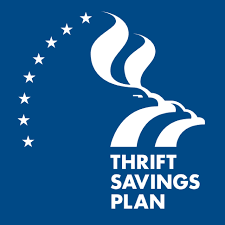Participation of Military Members in TSP Differs by Retirement System

US military personnel are eligible for participation in the Thrift Savings Plan (TSP) under the same conditions as federal civilian employees. How they participate is determined by the retirement system to which they belong.
For many years, the military had just one retirement system (known as the “legacy” system today), but individuals employed in 2018 and after were placed in a new retirement system (known as the “blended” retirement system). During a 2018 open season, some legacy system members were given the option to switch to the blended system, and around one-third of them decided to do so. In some ways, the distinction between the two military systems is analogous to the difference between CSRS and FERS on the civilian side, at least in terms of TSP matching contributions.
Members of the legacy retirement system, such as CSRS employees, aren’t eligible for TSP matching contributions. They also have a more generous computation factor applied to their military retirement, much as CSRS personnel. Members of the blended retirement system, on the other hand, receive matching contributions in the same way as FERS employees do. However, their retirement calculation is less generous.
Since 80% of individuals who enroll in the military don’t remain in uniformed duty until they fulfill the retirement eligibility conditions, part of the blended system was implemented. Adding a match to TSP contributions helps people who do not remain until retirement save more money. Of course, you must contribute to receive the match. We haven’t seen any numbers on how many blended system members contribute to the Thrift Savings Plan (TSP), but we assume it’s no more than 90% of civilian FERS employees.
Another distinction between civilian and military TSP participants is how withdrawals are taxed. Combat zone salary is free from federal income taxes. If you contributed to the traditional TSP balance using tax-free combat-zone pay after you begin withdrawals, the part of each TSP withdrawal based on your combat pay contribution will be tax-free when you make a withdrawal. The TSP will include that amount on the Form 1099 you receive.
Contact Information:
Email: [email protected]
Phone: 0
Popular posts

Social Security Earnings Limits...
Key Takeaways: Social Security...

TSP Withdrawals Made Simple:...
Key Takeaways Understanding your...
Free Retirement Benefits Analysis
Federal Retirement benefits are complex. Not having all of the right answers can cost you thousands of dollars a year in lost retirement income. Don’t risk going it alone. Request your complimentary benefit analysis today. Get more from your benefits.
I want more



